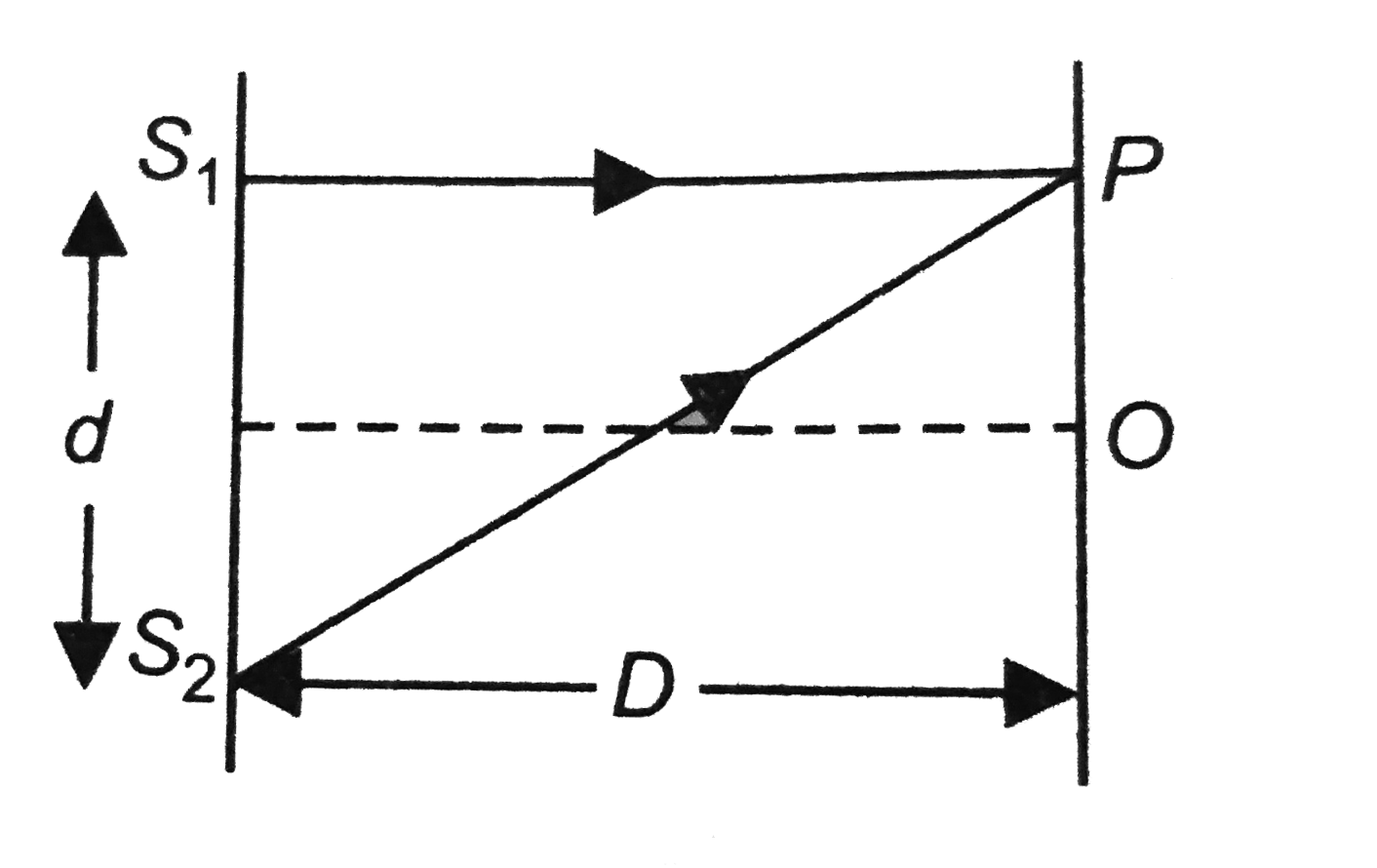Statement I: In Young's double-slit experiment, the two slits are at distance d apart. Interference pattern is observed on a screen at distance D from the slits. At a point on the screen which is directly opposite to one of the slits, a dark fringe is observed. Then, the wavelength of wave is proportional to the squar of distance between two slits.
Statement II: For a dark fringe, intensity is zero
If both assertion and reason are ture and reason is the correct explanation of asseriton.
If both assertion and reason are true but reason is not the correct explanation of asseriton.
If assertion is true but reason is false
If both assertion and reason are false.
The correct Answer is:B
(b) When dark fringe is obtained at the point opposite ot one of the slits then
S1P=D
and S2P=√D2+d2
=D(1+d2D2)1/2=D(1+d22D2)
Path difference =S2P−S1P
=D(1+d22D2)−D=d22D=λ2
or λ=d2D ⇒λ∝d2
Now, intensity of a dark fringe is zero.

Topper's Solved these Questions
Similar Questions
In Young's double-slit experiment , the slits are 0.5 mm apart and interference is observed on a screen placed at 1.0 m from the slits. It is found that the 9th bright fringe is at 8.835 mm from the 2nd dark fringe on the same side of the interference pattern. Find the wavelength of light used.
View SolutionIn Young's double slit experiment the slits are 0.5 mm apart and interference is observed on a screen placed at a distance of 100 cm from the slits. It is found that the 9th bright fringe is at a distance of 8.835 mm from the second dark fringe from the centre of the fringe pattern. Find the wavelength of light used.
View Solution
Knowledge Check
Statement-1: In Young's double slit experiment the two slits are at distance d apart. Interference pattern is observed on a screen at distance D from the slits. At a poit on the screen when it is directly opposite to one of the slits, a dard fringe is observed then the wavelength of wave is proportional of square of distance of two slits.
Statement-2: In Young's double slit experiment, for identical slits, the intensity of a dark fringe is zero.AStatement-1 is true, statement-2 is true: Statement-2 is a correct explanation for statement-1BStatement-1 is true, statement-2 true, statement-2 is not a correct explanation for statement-1CStatement-1 is true, Statement-2 is false.DStatement-1 is false, Statement-2 is true.In Young's double slit experiment, the two slits are at a distance 'd' apart. Interference pattern is observed on a screen at a distance D front the slit, if at a point on the screen, directly opposite to the slits, the first dark fringe is observed, then wave length of the wave will be
Aλ=d22DBλ=d2DCλ=2d2DDλ=Dd2In Young's double slit experiment the two slits are d distance apart. Interference pattern is observed on a screen at a distance D from the slits. A dark fringe is observed on the screen directly opposite to one of the slits. The wavelength of light is
AD22dBd22DCD2dDd2D
In Young's double slit experiment, white light is used. The seperation between the slits is kept 1mm and intensity is observed on screen distance 2m from the plane of the slits. At a point on the screen directly opposite to the either slit which of the following wavelength is not present
View SolutionIn Young's double-slit experiment, the slit are 0.5 mm apart and the interference is observed on a screen at a distance of 100 cm from the slits, It is found that the ninth bright fringe is at a distance of 7.5 mm from the second dark fringe from the center of the fringe pattern. The wavelength of the light used is
View SolutionIn a double slit experiment, the distance between the slits is d. The screen is at a distance D from the slits. If a bright fringe is formed opposite to one of the slits, its order is
View SolutionIn a double slit experiment , the coherent sources are spaced 2d apart and the screen is placed a distance D from the slits. If nth bright fringe is formed on the screen exactly opposite to a slit , the value of n must be -
View SolutionIn Young's double slit experiment, the slits are 0.5mm apart and interference pattern is observed on a screen placed at a distance of 1.0m from the plane containg the slits. If wavelength of the incident light is 6000Å, then the separation between the third bright fringe and the central maxima is
View Solution

